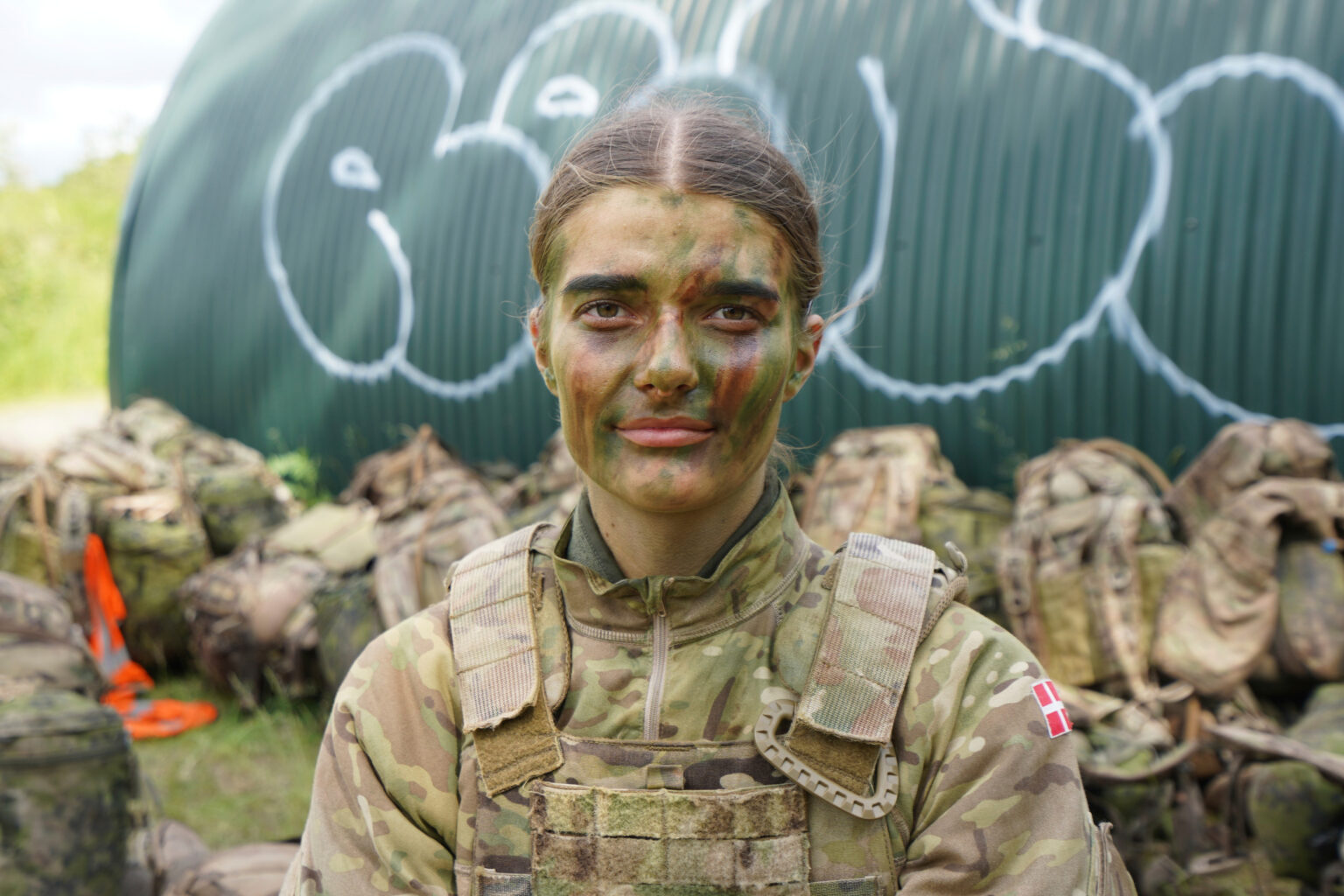Peering across a dense stretch of woodland outside Denmark’s capital with camouflage paint smeared across her face, 20-year-old Katrine scanned the horizon for threats. After nearly four months of military training, she and her unit spent early June conducting final exercises near the Danish army barracks in Hovelte, about 15 miles north of Copenhagen.
Katrine is one of many female soldiers who volunteered for military service earlier this year—a move that, until now, was the only path for Danish women to serve. While women have been able to join the armed forces as full-time personnel since the 1970s, they were excluded from the draft system that has long applied to men.
That is about to change. In a landmark move aimed at bolstering Denmark’s military readiness, the Scandinavian country is extending compulsory enlistment to women for the first time. Under new legislation passed by Denmark’s parliament in early June, young women who turn 18 after the law takes effect will be entered into the national conscription lottery on equal footing with men. Volunteer enlistment remains an option for both genders, but for the first time, unfilled slots will be assigned through a gender-neutral draft.
“In the situation the world is in now, it’s needed,” said Katrine, who welcomed the change. “I think it’s only fair and right that women participate equally with men.”
The policy shift is unfolding amid heightened regional tension sparked by Russia’s full-scale invasion of Ukraine. Even from the relative safety of Denmark, the conflict has left its mark. Lessons from the Ukrainian battlefield have been woven into Danish military training, giving recruits a sobering glimpse of the stakes. “That makes it very real,” Katrine said.
The reforms were initially announced in 2024 as part of a sweeping defense overhaul, with implementation expected by 2027. But Denmark’s government accelerated the timeline, bringing the start date forward to summer 2025 in response to growing security concerns.
“The current security situation” is the main driver of the move, according to Col. Kenneth Strøm, who heads the country’s conscription program. “They could take part in NATO collective deterrence,” he said of the incoming female draftees. “Raising the number of conscripts, that would simply lead to more combat power.”
Denmark, home to about 6 million people, currently has roughly 9,000 professional troops. With the expanded draft, the country expects to increase the number of conscripts to 6,500 annually by 2033, up from 4,700 in 2024. Currently, all physically fit men over 18 are called up, while women have only been eligible to volunteer. Female volunteers made up about 25 percent of this year’s cohort.
“Some will probably be very disappointed being chosen to go into the military,” said Anne Sofie, another volunteer in Katrine’s unit. “Some will probably be surprised and like it a lot more than they think they would.”
The service duration is also being extended—from four months to 11. This includes five months of basic training followed by six months of operational service, plus additional educational components.
The draft reform is just one part of Denmark’s broader military buildup. In February, the government unveiled a $7 billion Acceleration Fund aimed at raising defense spending above 3 percent of GDP—well above NATO’s 2 percent benchmark. The fund is helping finance various initiatives, including the conscription expansion.
“We see a sharpened security situation in Europe,” said Rikke Haugegaard, a researcher at the Royal Danish Defense College. “We have the ongoing conflict in Ukraine. We have focus on the Baltic countries, where Denmark is contributing a lot of soldiers. So, I think it’s a general effort to strengthen the Danish defense.”
Haugegaard also acknowledged logistical and cultural hurdles. “For the next year or two, we will be building a lot of new buildings to accommodate all these people. So, it will be a gradual process,” she said, noting concerns such as ill-fitting equipment and the risk of sexual harassment.
Denmark follows in the footsteps of its Nordic neighbors. Sweden reintroduced a gender-neutral draft in 2017 citing worsening security conditions, while Norway became the first NATO country to implement gender-equal conscription in 2013.
This article includes reporting by The Associated Press.
Read the full article here


